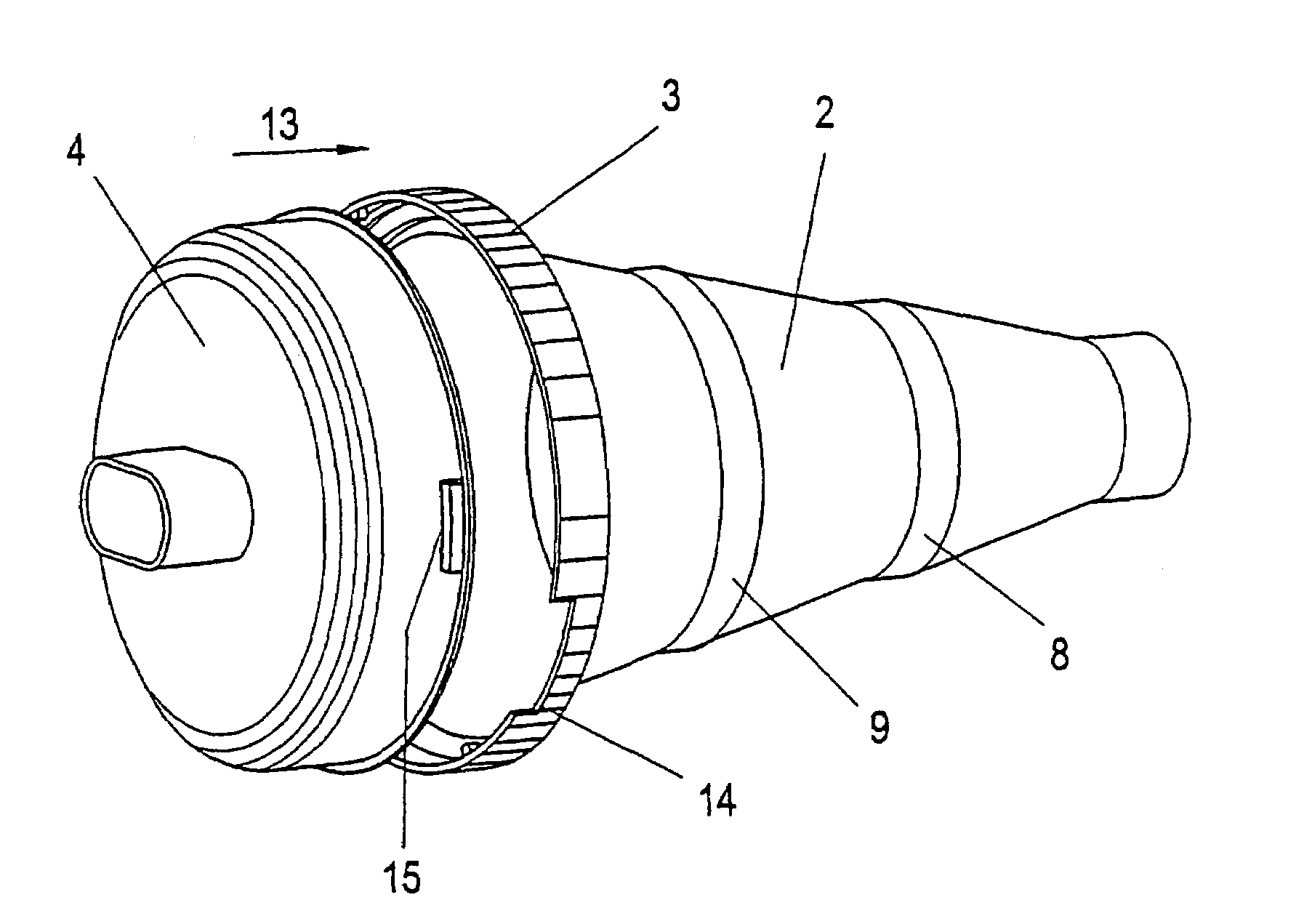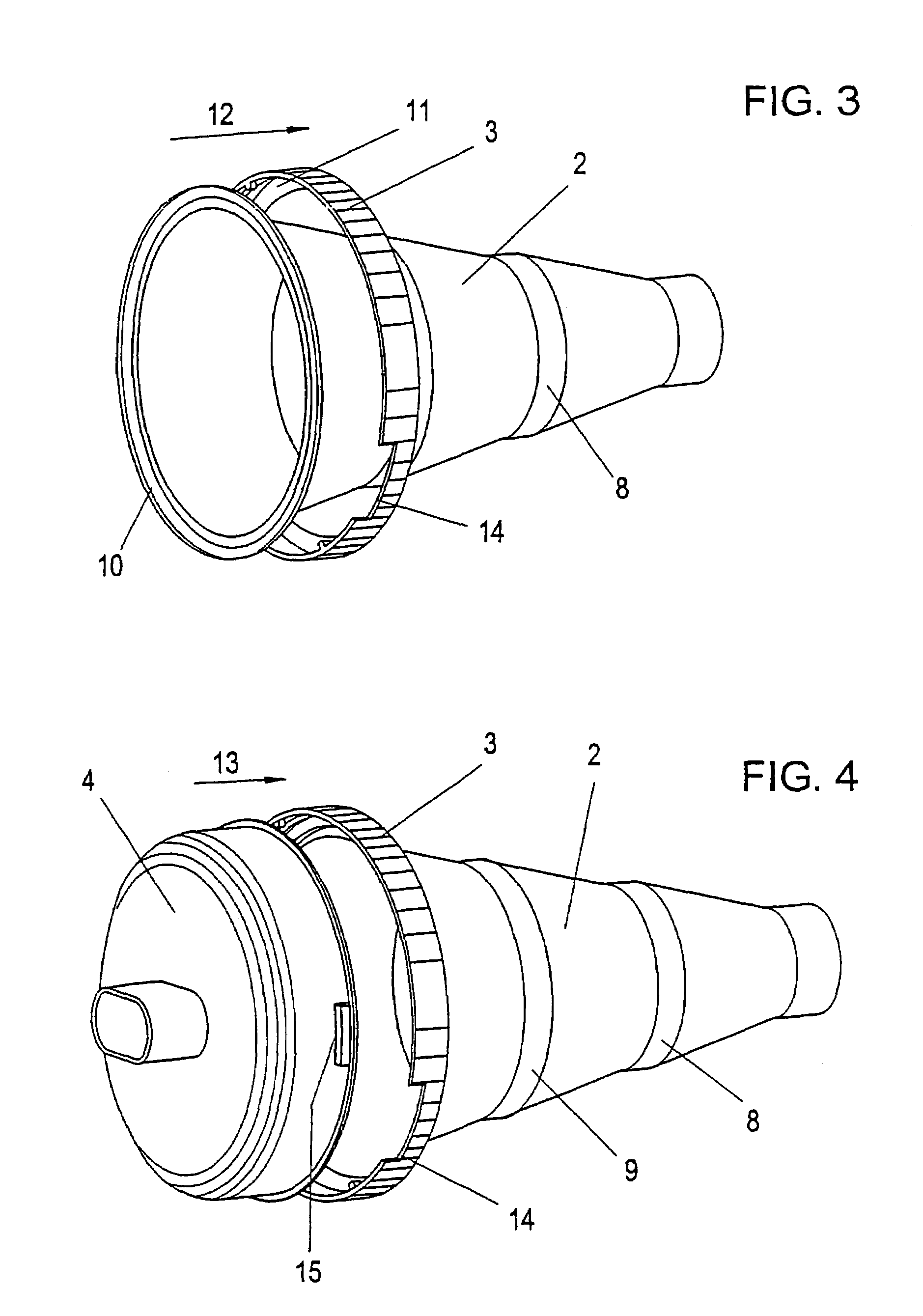Inhalation aid
a technology of inhalation and air, which is applied in the direction of inhalators, medical atomisers, respirators, etc., can solve the problems of reducing the speed of droplets, reducing the use of spacers, and unsuitable pocket devices, etc., so as to reduce the cross section of material, and reduce the effect of material cross section
- Summary
- Abstract
- Description
- Claims
- Application Information
AI Technical Summary
Benefits of technology
Problems solved by technology
Method used
Image
Examples
Embodiment Construction
[0029]In the Figures, the inhalation aid 1 comprises a conically tapering expansion bellows 2 defining a chamber, to which expansion bellows a retaining ring 3 is fixable as will be explained in more detail below, said retaining ring 3 being detachably fixable to a pot-like, rigid housing 4 as well again be explained in more detail below. As is clearly apparent from a comparison of FIGS. 1 and 2, the conically tapering expansion bellows 2, which is made of a continuous, elastic material, defines a chamber of variable volume, wherein the expansion bellows 2, on its end having a smaller cross section, is designed to include an opening 5 for attachment to an aerosol dispenser not illustrated in detail. The inhalation aid 1 is, moreover, formed with an opening 6 defining or comprising a mouthpiece on the housing 4.
[0030]Alternatively to the illustrated embodiment comprising an expansion bellows separate from the retaining ring 3 and the housing 4, it is also feasible to provide a suitab...
PUM
 Login to View More
Login to View More Abstract
Description
Claims
Application Information
 Login to View More
Login to View More - R&D
- Intellectual Property
- Life Sciences
- Materials
- Tech Scout
- Unparalleled Data Quality
- Higher Quality Content
- 60% Fewer Hallucinations
Browse by: Latest US Patents, China's latest patents, Technical Efficacy Thesaurus, Application Domain, Technology Topic, Popular Technical Reports.
© 2025 PatSnap. All rights reserved.Legal|Privacy policy|Modern Slavery Act Transparency Statement|Sitemap|About US| Contact US: help@patsnap.com



